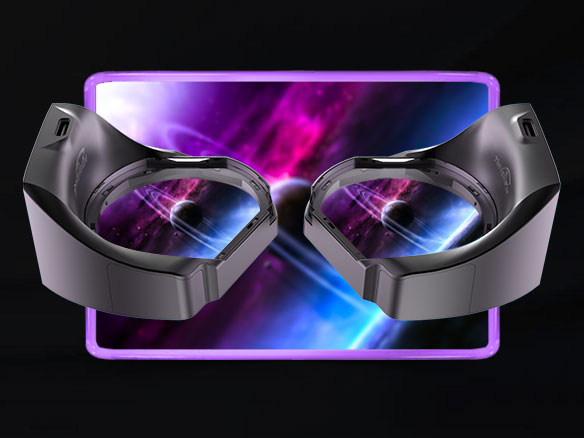 EMERGING TECH
EMERGING TECH
 EMERGING TECH
EMERGING TECH
 EMERGING TECH
EMERGING TECH
The HTC Vive virtual reality headset will become one of the first consumer headsets on the market to get eye motion tracking capability, HTC Corp. announced last week.
Chinese startup 7invensun has produced modular eye tracking devices that fit into the Vive that can be fitted with already existing headset models. The module, called the aGlass DK II, is planned for release this month in China. According to HTC, it will cost approximately $220 and, while the company is calling the initial rollout a developer kit, it is available to anyone for preorder.
The aGlass system consists of two modular rings that fit inside the Vive’s own lens space and sits between the user’s eyes and the Vive itself. The system also comes with a set of myopic lenses and also supports customized lenses for customers that need prescription setups.
The rings are outfitted with infrared emitters and cameras that capture the movement of the user’s eye by imaging the iris, pupil and eyelids. That information is transmitted through Universal Serial Bus cables from the modular rings that wrap around the Vive, plug into a combiner and then into the Vive’s auxiliary USB port.
For VR headsets and systems, eye tracking could become an important part of user experience and user interface design. If software can tell where a user is looking at the time, it can better predict what parts of a scene may need to be rendered next, highlight or sharpen objects, as well as provide a better overall experience. Eye tracking can also be used to provide an extra layer of control of the environment—look at an object to select and then interact—and it could even be broadcast to other users in social apps in order to simulate gaze.
One big improvement eye tracking could bring to headsets such as the Vive is a technology called foveated rendering: a software process where the most processing power is shifted to rendering the parts of a scene that a user is currently focused on, while reducing processor budget for parts of the scene that are not in focus.
With foveated rendering, it would be possible for computers and devices with lower hardware power to render and upkeep more complex VR environments, which would open up VR experiences a wider variety of devices and audiences. The ideal case would be to allow lower-end computers, and those not labeled “VR Ready,” to deliver VR content.
The aGlass system also comes with software that can be integrated with Vive applications to enhance playback with foveated rendering capability so users can immediately test the difference.
7invensun is an alumnus of HTC’s Vive X virtual reality accelerator program, initially launched in July with the purpose of bringing VR startups and new technologies into the industry. The startup is from the second batch picked for the Vive X accelerator and has plans for other products including an augmented communications device and a VR headset.
At $220 the aGlass system makes the already somewhat expensive HTC Vive headset, which currently runs at around $800, even more pricey.
However, just like the HTC Vive, this is a first-generation technology directed at developers and the emerging VR industry. Current consumer aligned VR headsets do not incorporate eye tracking and going the modular route means that current users do not need to purchase an entirely new headset just to get the capability.
Developer registrations for the aGlass system and a Software Development Kit is already open via the product’s website. Although the product is expected to launch in China sometime in May, HTC has said that the official release in the U.S. may not happen until late 2017.
Support our mission to keep content open and free by engaging with theCUBE community. Join theCUBE’s Alumni Trust Network, where technology leaders connect, share intelligence and create opportunities.
Founded by tech visionaries John Furrier and Dave Vellante, SiliconANGLE Media has built a dynamic ecosystem of industry-leading digital media brands that reach 15+ million elite tech professionals. Our new proprietary theCUBE AI Video Cloud is breaking ground in audience interaction, leveraging theCUBEai.com neural network to help technology companies make data-driven decisions and stay at the forefront of industry conversations.